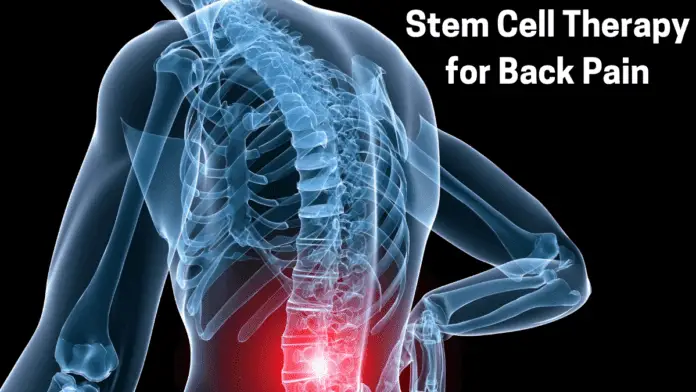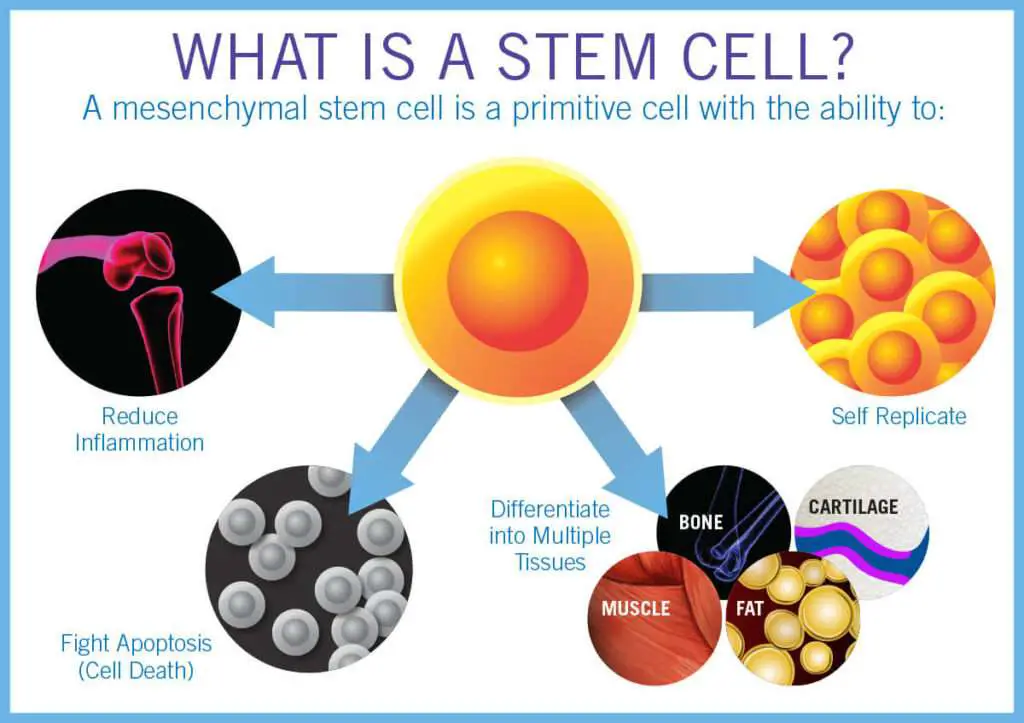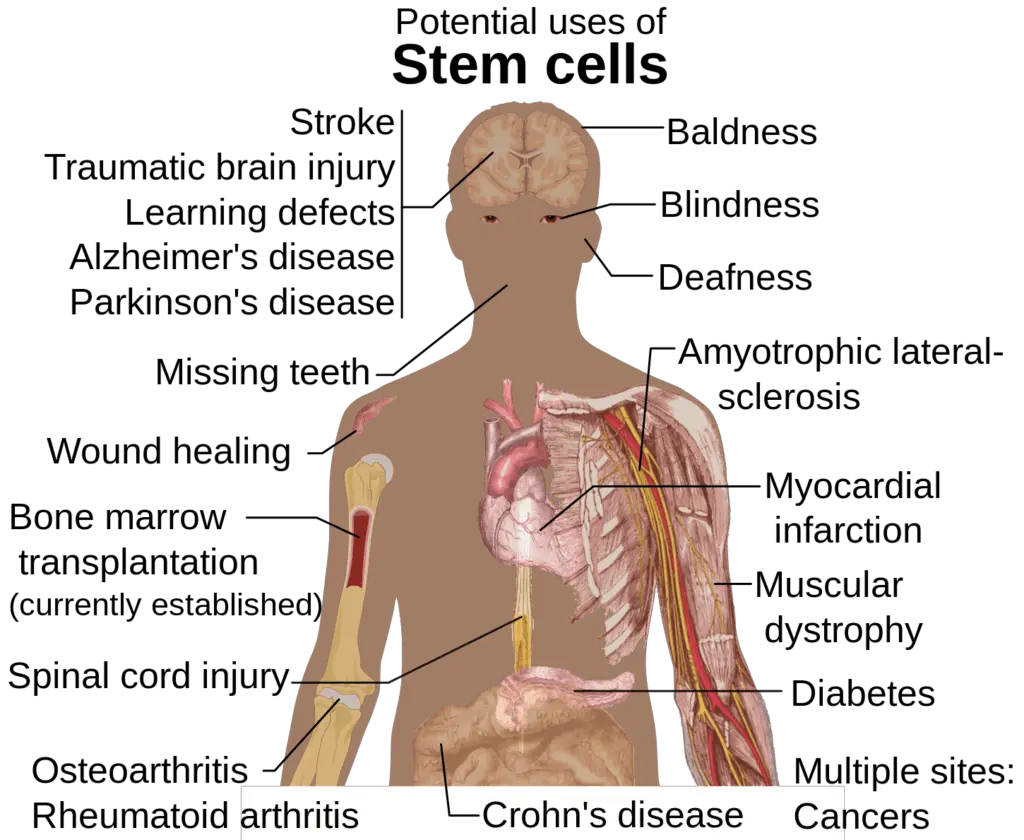
Back pain is one of the most common medical complaints, and stem cell therapy has recently emerged as a potential treatment for chronic or severe back pain. Stem cell therapy involves taking stem cells from other parts of your body and injecting them into the area where you’re experiencing pain. This procedure can help reduce inflammation, promote healing, and provide long-term relief from back pain. While stem cell therapy may not be right for everyone, it could offer an effective alternative to more invasive treatments such as surgery or medication. In this article, we’ll explore stem cell therapy for back pain in depth, including its cost and effectiveness, so you can make an informed decision about whether it’s right for you.
What is Stem Cell Therapy?

Stem cell therapy is a type of regenerative medicine that involves the use of stem cells to repair and regenerate damaged or diseased tissues. It is an innovative treatment option used to treat many health conditions, including those affecting the spine and back. The stem cells used in stem cell therapy are collected from various sources, such as bone marrow, fat tissue, or umbilical cord blood. These stem cells are then injected into the affected area to reduce inflammation and improve healing.
How Stem Cell Therapy Works for Back Pain

Stem cell therapy for back pain works by taking stem cells from other parts of your body and injecting them into the area where you’re experiencing pain. During this process, stem cells are harvested from fat tissue or bone marrow and then injected directly into the affected area. When stem cells are injected, they can help reduce inflammation, promote tissue growth, and provide long-term relief. In addition, stem cells can also help prevent further damage to your back by providing an environment that encourages healing and regeneration.
Which Back Conditions Can Be Treated with Stem Cell Therapy?

Stem cell therapy can be used to treat a variety of chronic and severe back conditions, including degenerative disc disease, spinal stenosis, and sciatica. In addition, stem cell therapy may also be beneficial for those with herniated discs or other types of back pain who have not responded to traditional treatments such as physical therapy or medication.
Degenerative Disc Disease: Degenerative disc disease is a condition in which the discs between your bones become damaged. Stem cell therapy helps by injecting stem cells into the area that has been injured. This can reduce inflammation and help with healing.
Spinal Stenosis: Spinal stenosis is a condition that causes narrow spaces in your spine to get smaller, which can cause pain and other problems. Stem cell therapy helps by using stem cells to promote tissue growth and reduce inflammation, so it can provide long-term relief from back pain.
Sciatica: Sciatica is when the sciatic nerve gets irritated or pinched and causes pain in your lower back, hip area, or leg. Stem cell therapy for this condition works by injecting stem cells into the affected area to help reduce inflammation and improve healing.
Stem Cell Therapy For Lower Back Pain
Lower back pain is one of the most common types of back pain, and stem cell therapy may be a potential treatment for this condition. Stem cells can be used to help reduce inflammation and promote tissue growth, which can provide long-term relief from lower back pain. In addition, stem cell therapy can also help improve mobility by increasing flexibility and range of motion.
Effectiveness of Stem Cell Therapy for Back Pain
The question of “Does stem cell therapy work for back pain?” has been the subject of several clinical studies in recent years. While some studies have reported positive results, others have been inconclusive, highlighting the need for more research in this area.
A 2018 study published in the Journal of Pain Research found that stem cell therapy showed promise as a treatment option for chronic lower back pain. The study, which involved 50 patients, reported significant improvements in pain, function, and quality of life for those who received stem cell therapy.
Another study published in the journal Regenerative Medicine in 2020 also reported positive outcomes for stem cell therapy in treating back pain. The study found that stem cell therapy improved pain scores and function in patients with degenerative disc disease.
However, it’s important to note that not all studies have reported positive results. Some studies have found no significant difference in outcomes between patients who received stem cell therapy and those who received a placebo. Additionally, some studies have raised concerns about the potential risks and side effects associated with stem cell therapy.
Overall, while there is some evidence to suggest that stem cell therapy may be an effective treatment option for back pain, more research is needed to establish its efficacy and safety. Further studies are needed to determine the optimal dose, timing, and delivery method of stem cell therapy for back pain.
What Are The Benefits Of Stem Cell Therapy?
Stem cell therapy has the potential to offer several benefits as a treatment for back pain. These benefits may include:
Reduced inflammation: Stem cells can help reduce inflammation, which is a common cause of pain in the back and other areas of the body.
Increased tissue regeneration: Stem cells have the ability to differentiate into various types of cells, including those that make up the tissues of the back. This can help stimulate the growth of new tissue and promote healing.
Minimally invasive: Stem cell therapy is typically a minimally invasive procedure that can be performed on an outpatient basis, with minimal downtime and recovery.
Potentially long-lasting results: Stem cell therapy may provide long-lasting relief from back pain, as the therapy works to repair and regenerate damaged tissues rather than simply masking pain symptoms.
Reduced need for medications: Stem cell therapy may reduce the need for medications such as opioids, which can have harmful side effects and be addictive.
Overall, stem cell therapy has the potential to be a promising alternative to traditional treatments for back pain, offering a minimally invasive and potentially long-lasting solution with the ability to address the root cause of the pain. However, it’s important to note that more research is needed to fully establish the safety and effectiveness of stem cell therapy for back pain.
Risks and side effects
As with any medical procedure, stem cell therapy carries certain risks and potential side effects. These may include:
- Infection
- Tissue damage or scarring
- Allergic reactions
- Rejection of stem cells by the body’s immune system
It’s also important to note that stem cell therapy is not always a successful treatment option for back pain. In some cases, symptoms may persist or even worsen after stem cell therapy.
Comparing Stem Cell Therapy to Other Treatment Options for Back Pain
1. Medications: Medications such as nonsteroidal anti-inflammatory drugs (NSAIDs), muscle relaxants, and opioids are often prescribed to manage back pain. While these medications can provide short-term relief, they can also have harmful side effects and be addictive.
2. Physical therapy: Physical therapy involves exercises and other techniques to help manage pain and improve mobility. While physical therapy can be effective for many patients, it may not be enough to fully address the underlying cause of back pain.
3. Surgery: Surgery is often considered a last resort for back pain and is typically only recommended for severe cases. While surgery can be effective in some cases, it is also invasive and carries risks such as infection and nerve damage.
4. Acupuncture: Acupuncture is a traditional Chinese medicine practice that involves inserting needles into specific points on the body to relieve pain. While some studies have shown acupuncture to be effective for back pain, more research is needed to fully establish its efficacy.
Overall, while each of these treatment options has its own benefits and limitations, stem cell therapy represents a promising approach to managing back pain that may offer significant advantages over traditional treatments. However, more research is needed to fully establish its safety and efficacy. It is important to discuss all treatment options with your healthcare provider to determine the best course of action for your specific condition.
Cost of Stem Cell Therapy For Back Pain
The cost of stem cell therapy for back pain can vary depending on a number of factors, including the type of stem cells used, the extent of the treatment required, and the geographic location of the treatment facility. On average, the cost of stem cell therapy for back pain can range from several thousand dollars to tens of thousands of dollars.
One of the factors that can significantly impact the cost of stem cell therapy is the type of stem cells used. For example, stem cells derived from bone marrow or adipose tissue may be less expensive than embryonic stem cells or induced pluripotent stem cells. Additionally, the extent of the treatment required, such as the number of injections or the need for multiple treatments, can also affect the overall cost.
Another factor to consider is the geographic location of the treatment facility. The cost of healthcare can vary widely depending on where you are located, and stem cell therapy for back pain may be more expensive in certain regions or countries.
It is also worth noting that stem cell therapy for back pain is often considered an experimental treatment and is not covered by insurance. This means that patients may need to pay out of pocket for the treatment, which can be a significant financial burden.
Despite the cost, many patients are willing to try stem cell therapy for back pain as a potential alternative to traditional treatments such as surgery or long-term medication use. As with any medical treatment, it is important to carefully consider the potential benefits and risks of stem cell therapy and to discuss all options with your healthcare provider before making a decision.
Read: Cryotherapy for Back Pain Relief
Takeaway
Stem cell therapy for back pain is an emerging treatment option that may offer significant advantages over traditional treatments. While stem cell therapy can be costly, some patients find it worth the cost due to its potential benefits. It is important to discuss all options with your healthcare provider before making a decision in order to determine the best course of action for your condition.
By understanding the cost, potential benefits, and risks associated with stem cell therapy for back pain, patients can make an informed decision about whether or not this treatment option is right for them.
FAQ
What is the success rate of stem cell therapy for back pain?
The success rate of stem cell therapy for back pain varies depending on the individual case and the severity of the condition being treated. However, studies have shown promising results in reducing pain and improving function in patients with degenerative disc disease and other spinal conditions.
How long does stem cell therapy last for back pain?
The effects of stem cell therapy can last anywhere from several months to several years, depending on the individual case. Some patients may require multiple treatments over time to maintain their results.
Can stem cells regrow the spinal disc?
While stem cells cannot regrow a completely degenerated spinal disc, they can help to regenerate damaged tissue and promote healing in the area. This can lead to reduced pain and improved function in patients with spinal conditions.











